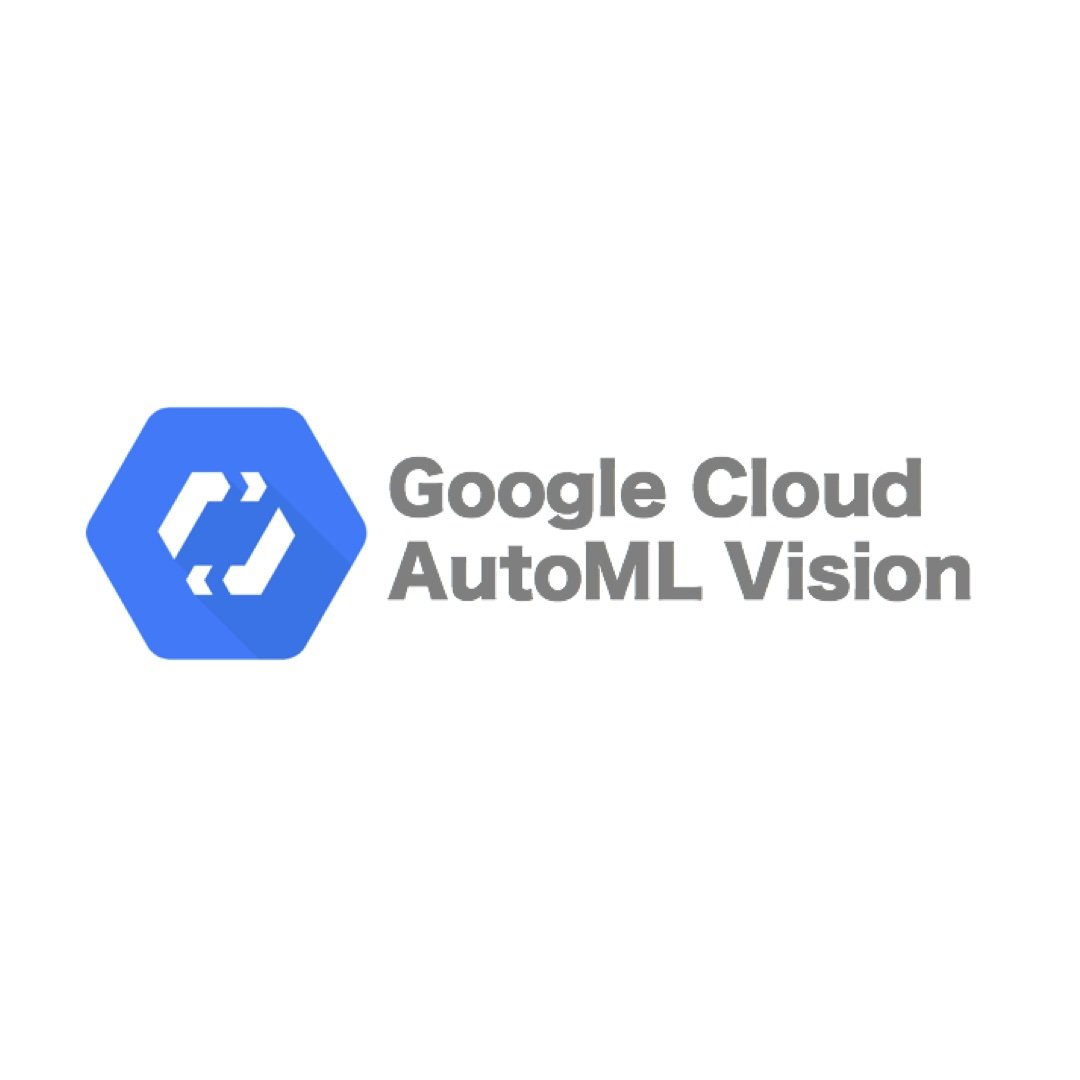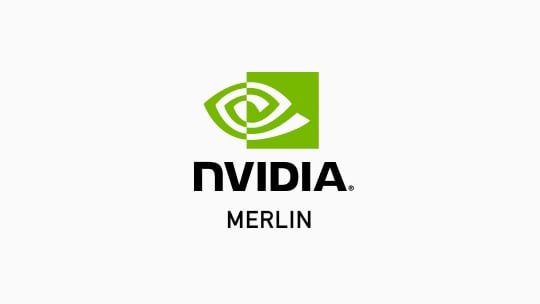What Is Generative AI? Complex Guide for 2024
Generative AI refers to a type of artificial intelligence that generates unique content, such as images, videos, and text, instead of solely identifying patterns within preexisting data. It utilizes sophisticated algorithms and neural networks to produce diverse outputs, which find applications in areas like art, music, education, business, and more.

Introduction
Contents
This guide is suitable for those seeking to expand their knowledge of Generative AI's mechanics, advantages, disadvantages, and practical business applications. The introduction provides an explanation of Generative AI's concept, its development over time, a review of its benefits and drawbacks, and supported by illustrative examples.

Generative AI is an innovative form of artificial intelligence that generates fresh and unique content, spanning images, videos, and text, which hasn't been seen before. Its ability to foster creativity and innovation holds significance in various domains, including art, music, and science.
Moreover, Generative AI offers practical applications for businesses, enabling the creation of product designs, marketing materials, and personalized customer recommendations. By harnessing Generative AI, businesses can produce compelling and distinctive content, enhance customer experiences, and attain a competitive edge.
Generative AI can generate diverse content types, including:
Generative AI can conduct data analysis too.
Generative AI models, such as generative adversarial networks (GANs) or variational autoencoders (VAEs), are extensively trained on datasets to understand patterns, structures, and relationships within the data.
A notable advancement in generative AI is the introduction of transformer models, like OpenAI's GPT (Generative Pre-trained Transformer), which has revolutionized the field by excelling in generating coherent and contextually relevant content, resulting in more realistic and high-quality outputs.
By leveraging these advanced models, generative AI can generate new data samples that closely resemble the patterns and characteristics of the training data, unlocking its remarkable potential in diverse domains such as art, music, science, and business applications.
Generative AI is applicable to various data types, including text, images, audio, and video. Text generation models, for instance, can produce realistic and coherent paragraphs, while image generation models can create unique visuals based on learned patterns from the training data.
The history of generative AI dates back to the 1950s and 1960s, when computer scientists began exploring machine learning and artificial intelligence. Notably, ELIZA, a natural language processing program developed during that time, simulated conversation by analyzing and generating responses based on user input.
Over the following decades, researchers refined generative AI techniques, including the development of neural networks for more advanced data analysis. In 2014, deep learning and generative adversarial networks (GANs) garnered significant attention, enabling the creation of highly realistic images and videos.
Today, generative AI continues to rapidly advance, finding applications in art, music, literature, fashion, architecture, gaming, and more. Its evolution promises to revolutionize technology creation and interaction as it becomes increasingly influential in society.
How common is the use of AI?
Companies are indeed investing heavily in artificial intelligence. In 2021, global corporate investment in AI reached nearly $94 billion, showing a substantial increase compared to the previous year.
While there was a slight decline in annual AI investment in 2018, it was only temporary, and since then, investment in AI has grown more than sixfold. Most of the investment in AI comes from private sources, highlighting the significance of AI development worldwide.
Various studies project significant growth in the global artificial intelligence market revenue from 2018 to 2030. According to market research firm IDC, the global AI market is expected to surpass $500 billion by 2024.
Precedence Research suggests an even more significant growth, projecting the market to exceed $1.5 trillion by 2030. These projections emphasize the expanding opportunities and importance of AI in the business landscape.
Market size and revenue comparison for artificial intelligence worldwide from 2018 to 2030

Source: Statista
The adoption of AI spans across various industries, with notable utilization in service operations, corporate finance, and strategy, where approximately 20 percent of industries report its use. The financial services sector leads in employing AI in product development, with over 30 percent of respondents indicating its utilization in 2023.
However, AI implementation in manufacturing and marketing remains relatively low due to the importance of human instincts and individual decision-making in these areas, making them less conducive to AI adoption.
What do employees think about adopting AI?
While concerns about job displacement are valid, many workers in the United States focus on the potential benefits of AI. According to a survey by Gartner, 70 percent of U.S. workers express a desire to incorporate AI to some extent in their jobs. The survey also reveals that specific tasks, such as data processing, are seen as ideal for AI assistance, with 36 percent of respondents mentioning it, and an additional 50 percent expressing appreciation for AI support in this area.

However, according to VentureBeat, privacy and security concerns have emerged as the primary factors leading survey participants to resist utilizing AI in their workplaces. To address these reservations, Gartner advises IT leaders to emphasize that the implementation of AI is not intended to replace or displace the workforce. Instead, the goal is to demonstrate how AI can enhance workers' effectiveness and enable them to focus on more valuable tasks.
Contrary to the common perception that organizations benefit from AI at the cost of their employees and that AI-driven automation can result in job losses, BCG reports that 60% of employees perceive AI as a collaborator rather than a threat to their jobs. Furthermore, organizations that have employees who find value in AI are 5.9 times more likely to experience substantial financial advantages compared to organizations where employees do not derive value from AI.
According to the findings, 64% of survey participants reported experiencing at least moderate value from utilizing AI. These individuals are 3.4 times more likely to have higher job satisfaction compared to employees who do not derive value from AI. It is worth noting that only 8% of respondents globally expressed lower job satisfaction due to the presence of AI.
Generative AI operates through the utilization of intricate algorithms and neural networks to produce fresh and innovative content. The process entails training a model on an extensive dataset comprising existing examples, enabling it to discern patterns and relationships within the data. Subsequently, the model employs these learned patterns to generate novel content.
The specific methodology employed in generative AI varies depending on the desired output.
For instance, in the case of image and video generation, generative models like GANs (generative adversarial networks) are frequently employed. These models consist of two neural networks—a generator network responsible for content creation and a discriminator network tasked with assessing the quality of the generated output. Through an iterative process, these networks collaborate in a feedback loop to generate outputs of progressively higher realism.
Generative AI, also known as artificial creativity, encompasses the development of AI models that can produce new and original content. This includes text, images, music, and even code. These models leverage large datasets to learn patterns, structures, and relationships within the data, allowing them to generate unique outputs. Let's explore the working process of generative AI in more detail:
Generative AI models have numerous applications, including content creation, data augmentation, style transfer, and more. As these models continue to advance, they are expected to play an increasingly significant role in various industries and creative fields, driving innovation and expanding possibilities.
Generative AI and the use of embeddings in company data can indeed be combined to create powerful solutions for extracting insights and making informed decisions. Here's how these two techniques can be effectively integrated:
By combining generative AI and embeddings of company data, organizations can unlock the full potential of their data and leverage it to gain valuable insights. This integrated approach enables a deeper understanding of the data, facilitates better decision-making, and supports continuous improvement based on evolving data requirements.

Image source: Pexels
Generative AI is a branch of artificial intelligence that focuses on creating new content or data based on learned patterns from existing datasets. The key notions and terms associated with Generative AI include:
Unsupervised learning
It involves training models without labeled data, allowing the model to learn patterns and structures in the data on its own.
Self-supervised learning
Models learn by predicting parts of the input data itself. This approach helps the model capture meaningful representations and relationships within the data.
Generative models
These models are designed to produce new outputs by sampling from learned distributions. Variational Autoencoders (VAEs), Generative Adversarial Networks (GANs), and autoregressive models like Transformers are popular examples of generative models.
Fine-tuning
This concept involves adapting a pre-trained model to a specific domain or context by training it on additional data. Fine-tuning helps improve the model's performance and relevance to the target task.
Embeddings
These are vector representations of data that capture semantic relationships between elements. Embeddings are often used as input for generative models, helping to encode meaning and context within the data.
Neural networks
These algorithms are modeled after the structure of the human brain and are used in generative AI to learn patterns and relationships within data.
Training data
This is the dataset used to train a generative AI model. The quality and size of the training data are crucial to the accuracy and effectiveness of the model.
Generative Adversarial Networks (GANs)
GANs are a type of generative AI model consisting of two neural networks that work together in a feedback loop. One network generates content, and the other evaluates the quality of the generated content, resulting in improved output over time.
Language models
These generative AI models are specifically designed to generate text by predicting the likelihood of words or phrases based on context.
Transfer learning
This technique involves using a pre-trained model and fine-tuning it for a specific task, rather than training from scratch. Transfer learning saves time and resources and can improve the accuracy of the model.
Overfitting
This is a common problem in generative AI where a model becomes too closely fit to the training data, resulting in poor performance when presented with new data.
By combining these key notions and techniques, generative AI can be applied to a wide range of applications, enabling the development of powerful tools that can generate novel content and insights tailored to specific contexts and needs.
Finance
Fraud detection
AI can be used to detect fraud by analyzing patterns and anomalies in financial transactions. The technology can learn from past data to detect new types of fraud and identify suspicious activities, helping financial institutions prevent fraud and reduce financial losses.
Risk assessment
Generative AI can assist financial institutions in assessing risk more accurately and efficiently. By analyzing vast amounts of data, generative AI can identify potential risks and provide real-time insights into market trends and economic conditions. This enables businesses to make more informed investment decisions and mitigate risks effectively.
Customer service
AI solutions can enhance customer service in the finance sector. Chatbots powered by generative AI can provide personalized assistance to customers, addressing common queries and offering real-time support. This improves customer satisfaction and reduces the workload on human customer service representatives.
Portfolio optimization
Generative AI can aid financial institutions in optimizing their portfolios by identifying investment opportunities likely to yield the best returns. By analyzing market trends and historical data, generative AI provides insights into investments with higher profit potential, assisting financial institutions in making informed investment decisions.
These applications highlight how generative AI can contribute to various areas of the finance industry, improving efficiency, reducing risks, and enhancing customer experiences.

Image source: Pexels
Retail
Personalized marketing
Generative AI can be utilized to personalize marketing campaigns for individual customers based on their past purchases, preferences, and browsing history. By analyzing this data, generative AI can provide insights into the products and services that each customer is most likely to be interested in. This enables retailers to create more effective marketing campaigns and increase sales.
Product design
Generative AI can assist with product design by generating new ideas and designs that align with customer preferences and trends. By analyzing customer feedback and purchasing patterns, generative AI can suggest new product features or designs that are likely to be well-received by customers.
Inventory management
Generative AI can help retailers optimize their inventory by predicting which products are likely to sell quickly and which may be overstocked. By analyzing data on customer demand and sales trends, generative AI can provide real-time insights into high-demand products and recommend adjustments to inventory levels. This can help retailers reduce costs and improve overall efficiency.
Customer service
Generative AI can enhance customer service in the retail industry by providing real-time support and assistance to customers. Chatbots powered by generative AI can address common questions and issues, freeing up human customer service representatives to focus on more complex tasks.
Overall, generative AI holds the potential to transform the retail industry by improving efficiency, boosting sales, and enhancing the customer experience.
 Image source: Pexels
Image source: Pexels
Marketing
Product visualizations
Generative AI can create 3D visualizations of products that can be used in marketing materials, such as product videos and images. By using generative AI, marketers can save time and resources compared to traditional methods of creating 3D models.
Personalized image and video content
Generative AI can generate personalized image and video content that resonates with each customer. By analyzing customer data, generative AI can create visuals that are tailored to each customer's preferences and behavior, resulting in more engaging and relevant marketing materials.
Creative exploration
Generative AI can explore different creative possibilities for marketing visuals. By inputting different parameters, such as color schemes and image styles, generative AI can generate a variety of image and video options for marketers to choose from. This enables marketers to experiment with different creative concepts and find the most impactful visual elements for their campaigns.
Video editing
Generative AI can automate the video editing process, making it easier and faster for marketers to create high-quality videos. For example, generative AI can automatically add transitions, subtitles, and other effects to videos, streamlining the editing workflow and saving time for marketers.
Generative AI in marketing offers a range of possibilities to create personalized, visually appealing, and engaging content. By leveraging generative AI technologies, marketers can optimize their ad targeting, enhance their marketing analytics, and streamline content creation processes, ultimately leading to more effective and impactful marketing campaigns.
Generative AI in marketing offers a range of possibilities to create personalized, visually appealing, and engaging content. By leveraging generative AI technologies, marketers can optimize ad targeting, enhance marketing analytics, and streamline content creation processes, ultimately leading to more effective and impactful marketing campaigns.
SEO optimization
Helping marketers with SEO optimization by analyzing search engine data to identify keywords and phrases that are relevant to their content. By using generative AI to optimize their content for search engines, marketers can improve their search engine rankings and attract more traffic to their website.
Additionally, AI can be used to generate meta descriptions and title tags that are optimized for search engines, further enhancing their website's search engine visibility.

Source: Pexels
Healthcare
Generative AI has enormous potential to transform the healthcare industry by improving patient outcomes, reducing costs, and advancing medical research. Here are a few ways generative AI can be used in healthcare:
Medical imaging analysis
Analyzing medical images such as X-rays, CT scans, and MRI scans. By detecting patterns and anomalies in these images, generative AI can assist radiologists in identifying potential health issues and making more accurate diagnoses.
Drug discovery
Assisting in drug discovery by generating new chemical compounds that could serve as potential treatments for various diseases. By analyzing large datasets of existing drugs and their effects, generative AI can generate new compounds that may exhibit similar or improved therapeutic effects.
Personalized medicine
Developing personalized treatment plans for individual patients based on their unique medical history, genetic makeup, and lifestyle factors. By analyzing large datasets of patient data, generative AI can identify patterns and correlations that enable healthcare providers to create personalized treatment plans that are more effective than generic approaches.
Medical research
Analyzing vast amounts of medical data to identify patterns and trends that can aid researchers in making new discoveries and advancements in medical science. Generative AI can help researchers uncover insights from complex datasets, leading to improved understanding and breakthroughs in various fields of medicine.

Tech: Product Development
AI can be employed in the development of digital products, accelerating the creation process and identifying issues or challenges.
Content generation
Automatically generating content such as images, videos, or text for various applications. For example, programmers can develop algorithms that generate realistic images or videos based on specific criteria or create text generation models for tasks like automated storytelling or chatbot responses.
Data augmentation
Assisting programmers in expanding their datasets by generating synthetic data that can be used to train machine learning models. This technique can help improve model performance, especially when the original dataset is limited.
Creative tools
Serving as a creative tool for programmers and artists. They can create interactive systems that allow users to generate unique and personalized artwork, music compositions, or other forms of creative expression.
Anomaly detection
Detecting anomalies in data by learning the patterns of normal behavior. Programmers can train these models to identify abnormal or fraudulent patterns in various domains, such as finance, cybersecurity, or manufacturing.
Simulation and game development
Applying generative AI in simulation and game development to create dynamic and realistic virtual environments. Programmers can use generative models to generate terrain, populate virtual worlds with intelligent NPCs (non-player characters), or simulate natural phenomena.
Optimization and design
Utilizing generative AI in various processes and designs. For example, it can be used in architectural design to generate and evaluate different building configurations or in product design to automatically generate optimized designs based on specific constraints and requirements.
These are just a few examples of how programmers can incorporate generative AI into their work, but the possibilities are vast and continually expanding as the field progresses.

Generative AI has numerous potential benefits, as well as some drawbacks. Here are the most significant pros and cons of generative AI
Pros
Cons
Overall, the benefits of generative AI are significant, but it's important to be aware of its potential drawbacks and take steps to mitigate them.
There are several generative AI tools available for businesses. The choice of the best tool depends on the specific use case, the level of customization required, and the technical expertise of the user. Here are some of the most popular generative AI tools available:
OpenAI GPT-3
OpenAI's GPT-3 is one of the most advanced generative AI models available, capable of generating human-like text, images, and even code. It is highly customizable and can be used for a wide range of applications, including chatbots, content creation, and product recommendations.
 Image source: Pexels
Image source: Pexels
Google Cloud AutoML
Google Cloud AutoML is a suite of tools that allows users to build and train custom machine learning models without requiring extensive technical expertise. It includes a range of generative AI tools, such as AutoML Vision and AutoML Natural Language, that can be used to create custom image and text recognition models.

Image source: Google Cloud AutoML
Hugging Face Transformers
Hugging Face Transformers is an open-source library of pre-trained generative AI models, including GPT-2 and GPT-3, that can be fine-tuned for specific use cases. It is highly customizable and can be used for a wide range of applications, including chatbots, content creation, and sentiment analysis.

Image source: Hugging Face Transformers
IBM Watson Studio
IBM Watson Studio is a cloud-based platform that allows users to build and deploy machine learning models. It includes a range of generative AI tools, such as Watson Natural Language Understanding and Watson Assistant, that can be used for a wide range of applications, including chatbots, sentiment analysis, and content creation.

Image source: IBM Watson Studio
NVIDIA Merlin
NVIDIA Merlin is a suite of tools for building and deploying machine learning models on NVIDIA GPUs. It includes a range of generative AI tools, such as NVIDIA Megatron and NVIDIA Triton, that can be used for a wide range of applications, including chatbots, content creation, and recommendation engines.

Image source: NVIDIA Merlin
These are just a few of the many generative AI tools available for businesses. It's important to carefully evaluate each tool and choose the one that best meets your specific needs and requirements.
Patryk Szczygło
Patryk is an engineer leading R&D department to develop more knowledge in cutting edge technologies. High expertise in blockchain, extended reality and mobile development helps him tackle the hardest technical problems. Working in fast and demanding environment develops necessary soft skills to manage R&D teams.

Read more on our Blog
Explore and examine the key considerations surrounding AI for business.